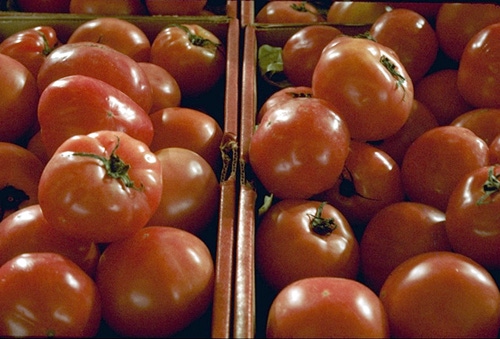March 8, 2011

Recycling growing media and removing unwanted fruits were among the money-saving tips offered during a recent greenhouse tomato seminar at the LSU AgCenter Red River Research Station at Bossier City, La.
From his work with growing media, AgCenter researcher H.Y. Hanna suggested growers use perlite, which he has been recycling for 15 years. “We’ve produced 1.27 million pounds of tomatoes in the same perlite and never had one crop failure.
“It is economical to grow tomatoes in soilless media, but reusing media as-is is a recipe for disaster,” Hanna said. So, what do you do? “Disinfect the root media with hot water.”
The crew at the Red River Research Station uses a heavy-duty nozzle mounted on the steel wand of a pressure washer with water at 195 degrees to stir and disinfect the perlite.
Hanna also advised not leaving misshapen and damaged fruit on a plant. “Remove unwanted fruit. You’ve got to have a sharp eye. If you have a messy-looking flower, it’s going to produce a bad fruit.”
The tomato program staff at the research station uses inexpensive mirrors under the fruit clusters for easier viewing to spot misshapen fruit for removal. “Prune fruit clusters as soon as possible to give the plants a break and stop them from wasting energy.” Hanna said.
“Remove the dead anthers. They have dead pollen in them,” he said, citing botrytis, a disease that thrives on dead tissue.
Jerry Bond, who is building a greenhouse in Shreveport, La., said he learned many tips he intends to apply in his operation. “This is our tax dollars at work,” he said. “It’s a really good thing to see what the state is doing through the education system that goes to ordinary folks out there that live in the community.”
Hanna has studied and tested tomato varieties in four greenhouses for yield, fruit weight, quality and shelf life. A good variety is the recipe for success, he said.
He also stressed sanitation. “Check your heater,” he said. “You need a blue flame. If you have soot, your heaters are not burning clean.” Heating costs also can be reduced in a bottom-heated greenhouse using diesel fuel rather than suspended heaters using natural gas.
Participants also practiced grafting in the research station auditorium after the program. Grafting invigorates the tomato plant, Hanna said.
You May Also Like




